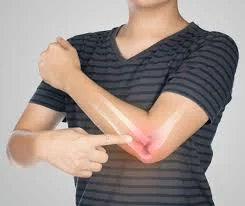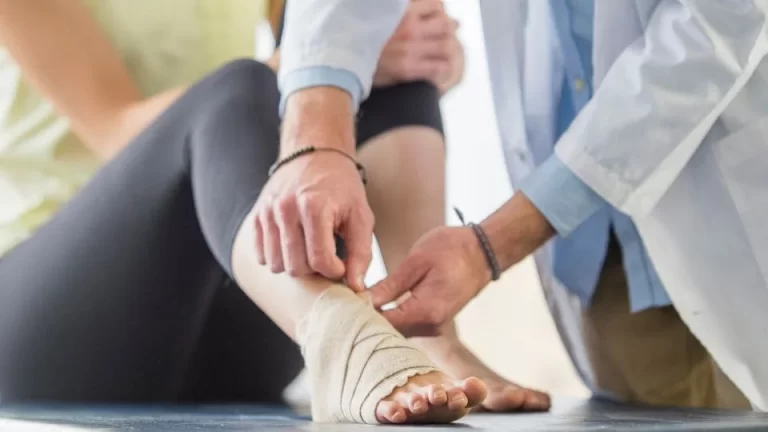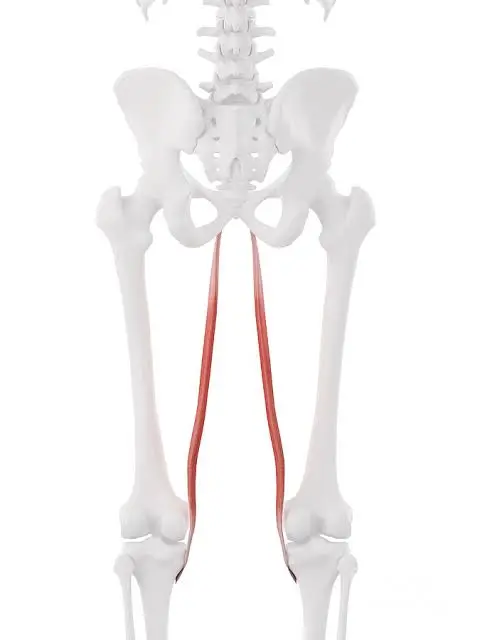Bone diseases
Table of Contents
Introduction
Bone diseases can weaken your bones, causing them to break and deform.
Bone is a living, growing tissue composed primarily of collagen and calcium. The skeleton is a rigid framework of bones that protect soft organs and support the body.
The human body contains two types of bone. Cortical bones are the outer layer of the bones and are compact and dense. Trabecular or cancellous bones form the inner layer of the bones and are spongy with a honeycomb structure. The bones not only protect the organs from injury, but they also allow the body to move and support itself. Furthermore, bones serve as a reservoir for minerals such as calcium.
A person may suffer from a condition or disease that impairs bone strength and motion. Several factors, including genetics, environmental factors, diet, and infections can cause these conditions.
This article will look at some of the diseases that can affect the bones and their potential causes and symptoms.
List of bone diseases
Among the most common bone conditions are:
Osteoporosis
Osteoporosis is a disease that causes bone mass and mineral density to decrease. The bone’s quality and structure may also change. Osteoporosis can weaken bones and increase the risk of fracture.
Osteoporosis is a disease that affects people of all ethnicities and increases with age. Non-Hispanic white females and Asian females are the most commonly affected.
It currently affects 44 million Americans aged 50 and up, or roughly half of all Americans. Women are more likely than men to develop osteoporosis, and children may be at risk of developing juvenile osteoporosis. Bone density issues can arise because the body loses too much bone tissue, produces too little, or a combination of the two. It is usually asymptomatic. That is, most people with osteoporosis are unaware of their condition until they have a bone fracture and visit a doctor, who makes the diagnosis.
Paget’s syndrome
Paget’s disease is a condition that affects the process of bone remodelling. This is the process by which the body degrades old bone tissue and replaces it with new bone tissue.
This is a bone disorder in which the bone renewal (remodelling) process occurs too quickly, resulting in bone deformities (soft, enlarged bones such as the spine, pelvis, skull, and long bones of the thighs and lower leg). Paget’s disease is more common in white adults over the age of 55 and may be hereditary.
People with this chronic condition have a faster rate of bone rebuilding, resulting in an unusual bone structure. This can either soften or expand the bones, making them more prone to complications like bending or fractures.
Osteopenia
Osteopenia is defined as a decrease in bone mineral density that is less than normal but not low enough to be classified as osteoporosis by a doctor.
A T-score is a bone density measurement. A person with a T-score between -1 and -2.5 is diagnosed with osteopenia, whereas a T-score less than -2.5 is diagnosed with osteoporosis. In females, the prevalence of osteopenia is four times higher than in males.
Osteogenesis imperfecta
Osteogenesis imperfecta (OI) is a bone disorder that causes fractures. OI is also known as a brittle bone disease by some people. The condition is caused by a change or mutation in the genes that carry information for the production of a protein called type I collagen. This protein is required for healthy bones.
People with a family history of OI are more likely to develop the disease because the gene mutation can be inherited from one or both parents. There are various types of OI. Type I is the most common and mildest, while type II is the most severe.
Your joints may be too easily separated, and your spine may curve. You may also experience hearing loss, breathing difficulties, and a dark colour in the whites of your eyes. Although there is no cure, some symptoms can be managed with a healthy lifestyle, medication, and, in some cases, surgery.
Osteonecrosis
Osteonecrosis, also known as avascular necrosis or aseptic necrosis, occurs when a bone’s blood flow is disrupted, resulting in bone tissue death Source. This can result in bone breakdown and joint collapse.
While osteonecrosis can affect any bone in the body, it is most commonly seen in the shoulders, hips, and knees. The condition is most common in people aged 20 to 50. These people frequently have a history of trauma, corticosteroid use, or excessive alcohol consumption.
Osteoarthritis
The most common type of arthritis is osteoarthritis. The degeneration of cartilage, the tissue that covers the surface of joints, causes this condition to affect the body’s joints. Osteoarthritis can also cause bone shape changes. Osteoarthritis is most commonly found in the hands, hips, and knees.
The most common type of arthritis, osteoarthritis, is a chronic degenerative joint disease that affects over 3 million Americans each year. Osteoarthritis develops when the cartilage that acts as a cushion between bones wears away, causing the bones to rub together and cause pain, inflammation, and stiffness.
Osteomyelitis
Osteomyelitis is an infection or inflammation of the bone, whereas myelitis is inflammation of the fatty tissues within the bone. It usually happens when a bacterial or fungal infection from the bloodstream or surrounding tissue enters a bone. It can happen at any age, but it is more common in children under the age of five.
Dysplasia of the fibrous tissue
Fibrous dysplasia is characterized by the replacement of abnormal fibrous tissue by healthy bone tissue. The abnormal scar-like tissue weakens the bone. This can cause the bone to change shape, increasing the likelihood of fracture.
Fibrous dysplasia is usually caused by a gene mutation that causes bone cells to produce an abnormal type of fibrous bone. While it can occur in any bone, it is most common in the thigh, shin, ribs, skull, humerus, and pelvis. In this case, your genes instruct your body to replace healthy bone with other types of tissue. Bones tend to grow weaker, irregularly shaped, and more prone to fracture.
Many children with this condition between the ages of 6 and 10 break bones. It typically affects one side of the body, most commonly the arm, pelvis, face, leg, or ribs. Medication, casts, and surgery may be required to alleviate symptoms. Consult your doctor about dietary and exercise changes that may be beneficial.
Tumours and bone cancer
Bone cancer is a rare type of cancer that develops when cells in the bone begin to proliferate uncontrollably. Any of the cells in the bone can become cancerous.
Cancers that begin in the bone are known as primary bone cancers. Osteosarcoma and Ewing sarcoma are the most common types of primary bone cancers. Cancer cells can also spread from other parts of the body to the bone. The most frequent site of bone metastases is the spine.
Bone tumours form when cells inside the bone grow uncontrollably. These tumours can be benign or malignant, with benign (noncancerous) bone tumours being more common.
Osteomalacia
Osteomalacia, also known as bone softening, is a condition in which the bone does not harden properly after formation. This metabolic bone disease occurs when the bone’s mineralization is incomplete. Mineralization is the process by which minerals coat the inner layer of the bone, resulting in a hard outer shell. Because of the incomplete formation of this shell, the collagen is soft and vulnerable.
Rickets
Rickets is a childhood bone condition that is similar to osteomalacia, but it is caused by poor mineralization.
It causes soft, brittle bones, which is usually caused by a lack of vitamin D. Without enough vitamin D, the body is unable to metabolise calcium and phosphorous, both of which are required for proper bone development and growth. Vitamin D deficiency can be caused by poor nutrition, a lack of sun exposure, or malabsorption.
Osteopetrosis
This may appear to be the inverse of osteoporosis because it means that your bones become overly dense. They are not more powerful. They weaken and may break more easily. This disease can also affect the marrow inside your bones, making it difficult for your body to fight infection, transport oxygen, and control bleeding. Medication, supplements, hormones, and, in some cases, surgery are used as treatments. Physical therapy can also be beneficial.
Diabetes mellitus type 1
It usually begins when your bones are still growing in childhood. With this condition, your body produces little or no insulin, a hormone that aids in blood sugar control. It may also cause bone deterioration. Doctors aren’t sure why, but your bones may not grow as well or reach their peak bone mass if you don’t take enough insulin. Your doctor can assist you in managing the condition through medication, diet, blood sugar tests, and lifestyle changes.
Lupus
When you have an immune system disorder like lupus, your defence system attacks your own body. Common symptoms include muscle pain, fever, tiredness, rashes, and hair loss. Swollen, painful joints are also common. You’re also more prone to osteoporosis and bone fractures. Corticosteroids, which are commonly used to treat lupus, can also cause bone loss. When developing your treatment plan, your doctor will take this into account.
Arthritis Rheumatoid
This, like lupus, is an autoimmune disease. The immune system of your body attacks your joints and bones, most commonly in the hands and feet. Aside from joint pain and swelling, you may experience fatigue and fever. Your doctor can treat it with medication and, in some cases, surgery. It may also help to eat anti-inflammatory foods and exercise to strengthen your heart and other muscles and improve the range of motion in your joints.
Celiac Disease
It indicates that your body is unable to process gluten, a protein found in wheat and other grains. Your immune system attacks and damages your small intestine when you consume it. This makes it more difficult for your body to absorb nutrients, such as calcium, that your bones require. Weaker bones are common in people who have this disease but are unaware of it. If your doctor diagnoses you with celiac disease, you’ll need to follow a gluten-free diet to allow your body to heal.
Hyperthyroidism
It occurs when your thyroid gland produces an abnormally large amount of the hormones that normally help your body use energy. It can cause fatigue, insomnia, and tremors. It also hastens bone loss, which your body cannot always replace quickly enough. If this continues for an extended time, you may develop osteoporosis. Your doctor can help you restore your hormone levels with medication, surgery, or both.
Gout
People who develop gout, a common disorder in which excess uric acid crystals accumulate in the joints, causing abnormal swelling, pain, and redness, have unusually affected joints. The big toe is usually swollen, but symptoms can also occur in other joints, such as the ankle, foot, or knee. Gout can develop as a result of your diet or if your kidneys are not properly processing uric acid.
Symptoms of bone disease
The symptoms of bone disease vary depending on the condition, and some people have no symptoms at all. For example, osteoporosis is known as a “silent” disease because it usually has no symptoms until a bone is broken.
The following are some general symptoms of bone disease:
- bone ache
- fractures caused by low-impact, low-energy activities
- sprains
- infections
- joint discomfort
- backache
- weakness
A person may also experience symptoms associated with a specific type of bone disease. For example, someone suffering from osteomyelitis may experience redness, swelling, and warmth at the injection site.
A person with bone cancer may also have other symptoms such as weight loss and fatigue, as well as a lump in the tumour’s location.
Causes of the bone disease
Bone disease can be caused by a variety of factors. Some may be unique to a particular type of bone disease. Among the causes are:
- Genetics: A person may be at a higher risk of developing a type of bone disease due to a mutation or change in a gene or a family history of bone disease. A gene mutation can be inherited from one or both parents.
- Ageing causes the mineral content of the bones to decrease, causing the bones to become less dense and more fragile.
- Nutrition: A healthy, balanced diet is essential for strong, healthy bones. People, in particular, must consume adequate amounts of calcium and vitamin D.
- Bone remodelling issues: After the age of 20, a person may experience an imbalance in which the body breaks down old bone tissue faster than it can replace it. This can lead to a decrease in bone strength and quality.
- Hormonal changes: Hormone imbalances may increase the risk of developing osteoporosis. Low oestrogen levels during menopause, for example, or low testosterone levels can increase a person’s risk of osteoporosis.
- Medications: Certain medications can increase the risk of developing bone disease. Corticosteroids, thyroid medications, and drugs that reduce sex hormone levels, for example, can all be detrimental to bone health.
- Lifestyle factors such as a lack of physical activity, smoking, and excessive alcohol consumption can all predispose a person to osteoporosis.
Diagnosis of bone diseases
To receive a diagnosis of a bone condition, a person must consult a doctor. Typically, the doctor will begin by taking a medical history. This could include questions about how long they’ve had symptoms and whether they have a family history of bone disease.
A physical examination may also be performed by the doctor to check for:
- height or weight loss
- posture modification
- changes in a person’s balance or walking style
- Muscle strength variations
- any redness or swelling, as seen in osteomyelitis
The doctor may also order tests to determine the type of bone disease that a person has, such as:
X-ray: A dual-energy X-ray absorptiometry scan is the most common type of X-ray imaging that a doctor may use. This technique employs a small number of X-rays to assess the body’s bone mineral density.
MRI scans: This test creates an image of the body using a magnet and provides detailed images of bones and other tissues, such as cartilage and ligaments.
Blood tests: A doctor may order blood tests from a Trusted Source to help confirm a bone cancer diagnosis and provide information on the stage of cancer.
Biopsy: For an accurate diagnosis, a doctor may take a small amount of bone tissue from the affected area and examine it under a microscope.
Treatments
The best treatment option will be determined by the type of bone disease and the severity of the condition.
The goal of treatment for osteoporosis and osteopenia, for example, is to stop further bone loss and prevent fractures. As a result, treatment may include:
recommending dietary advice
making lifestyle changes like increasing physical activity and quitting smoking
putting in place measures to reduce the risk of falls and fractures
medication prescription
Some conditions, such as OI, do not have effective treatments at the moment. As a result, the goal of treatment is to reduce or eliminate symptoms while also improving muscle strength and bone mass. A person with OI may benefit from physical therapy in addition to medication to improve muscle strength and mobility.
Surgery might be necessary for some conditions. For instance, surgery is usually necessary to preserve the joints in a person with osteonecrosis. To remove a bone tumour, a patient may need surgeryTrusted Source.
Depending on how advanced their bone cancer is, patients may also require additional therapies like radiation or chemotherapy.
Summary
Bone diseases can weaken bones, causing them to break and deform. Bones are living, growing tissues composed primarily of collagen and calcium, and are essential for protecting soft organs and supporting the body. The human body contains two types of bones: cortical and trabecular. Genetics, environmental factors, diet, and infections can cause bone diseases. Common bone diseases include osteoporosis, Paget’s disease, osteopenia, osteogenesis imperfecta, osteonecrosis, osteoarthritis, osteomyelitis, fibrous dysplasia, bone cancer, osteomalacia, and osteopenia.
Osteoporosis is a disease that causes bone mass and mineral density to decrease, affecting people of all ethnicities and increasing with age. Paget’s disease affects bone remodelling, resulting in deformities and increased fracture risk. Osteopenia is a decrease in bone mineral density but not low enough to be classified as osteoporosis.
Osteogenesis imperfecta (OI) causes fractures and is more common in females. Osteonecrosis disrupts bone blood flow, causing bone breakdown and joint collapse. Osteoarthritis is the most common type of arthritis, affecting over 3 million Americans annually. Bone cancer is a rare type that develops when cells in the bone begin to proliferate uncontrollably.
Bone disease can be caused by genetics, age, nutrition, bone remodelling issues, hormonal changes, medications, and lifestyle factors. Diagnosis involves a doctor taking a medical history, physical examination, and tests like X-rays, MRIs, blood tests, and biopsies. Treatment options include dietary advice, lifestyle changes, medication prescription, and physical therapy. Some conditions, like osteoporosis and osteopenia, may require surgery to preserve joints or remove bone tumours. Additional therapies may be required depending on the advanced stage of the disease.
FAQs
Osteoporosis is one of the most common types of bone disease. The risk of breaking a bone increases with osteoporosis. Approximately half of all women over the age of 50 will suffer a hip, wrist, or vertebra (bones of the spine) fracture during their lifetime.
Slender, thin-boned women and men are more likely to develop osteoporosis than larger-boned women and men because they have less bone to lose. Race. White and Asian women are especially susceptible. African-American and Mexican-American women are less likely to be affected.
Osteopetrosis. A rare genetic disorder characterized by excessive bone density caused by decreased activity of bone-resorbing osteoclasts.
In older adults, symptoms include aching bones and frequent fractures, while children experience delayed bone growth. Treatment for bone disorders involves addressing the cause of the calcium deficiency, which may include surgery, radiation, or nutritional supplements.
Osteogenesis imperfecta (OI) is a heritable genetic disease in which bones fracture (break) easily, often with no apparent cause or minor injury. The symptoms of OI, also known as brittle bone disease, can range from mild with only a few fractures to severe with numerous medical complications.
References
- Santhakumar, S. (2023, February 16). What to know about bone diseases. https://www.medicalnewstoday.com/articles/bone-diseases
- Conditions That Affect Your Bones. (n.d.). WebMD. https://www.webmd.com/osteoporosis/ss/slideshow-bone-conditions
- Bone Diseases Portal. (n.d.). Encyclopedia Britannica. https://www.britannica.com/browse/Bone-Diseases
- Bone diseases. (n.d.). Healthdirect. https://www.healthdirect.gov.au/bone-diseases







